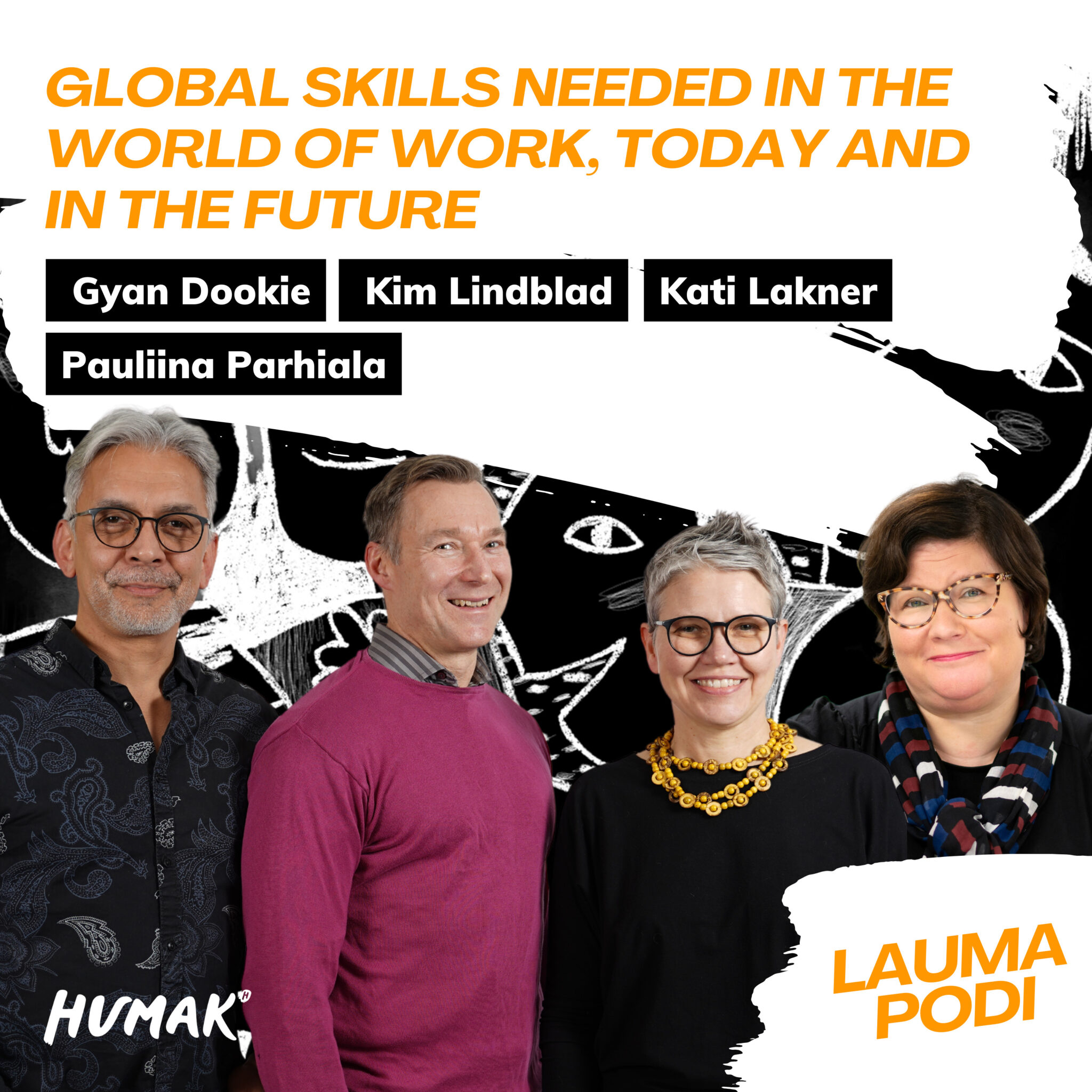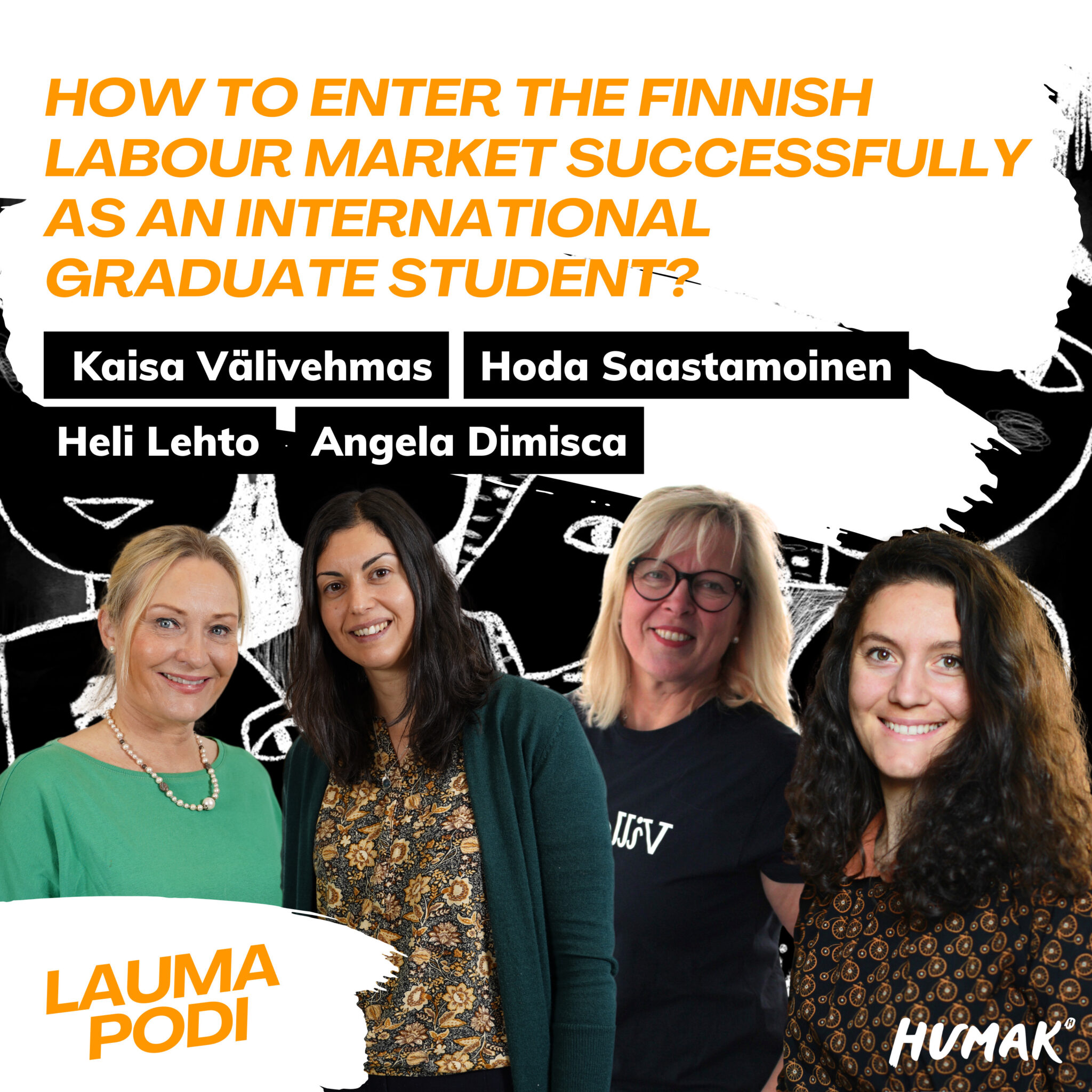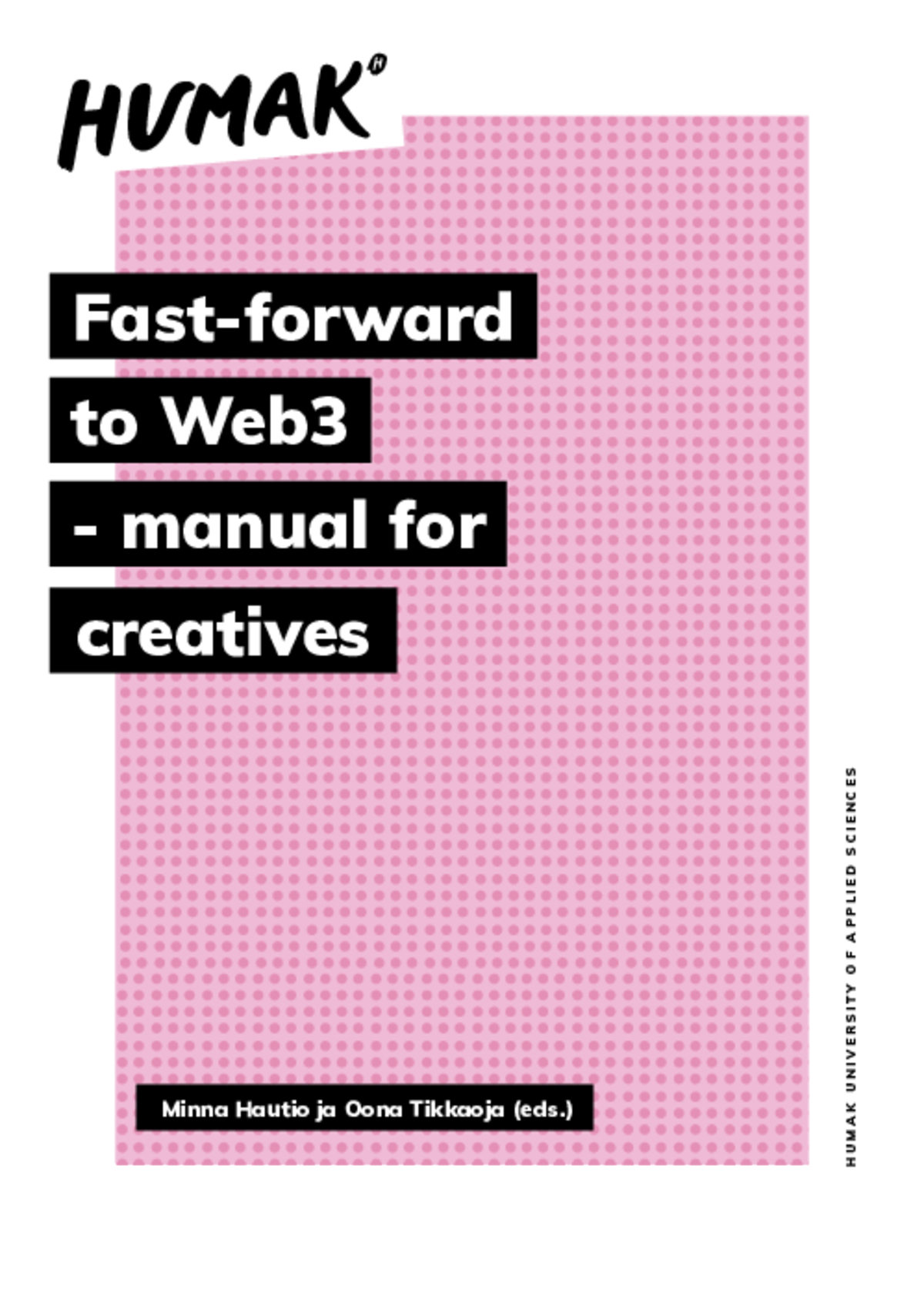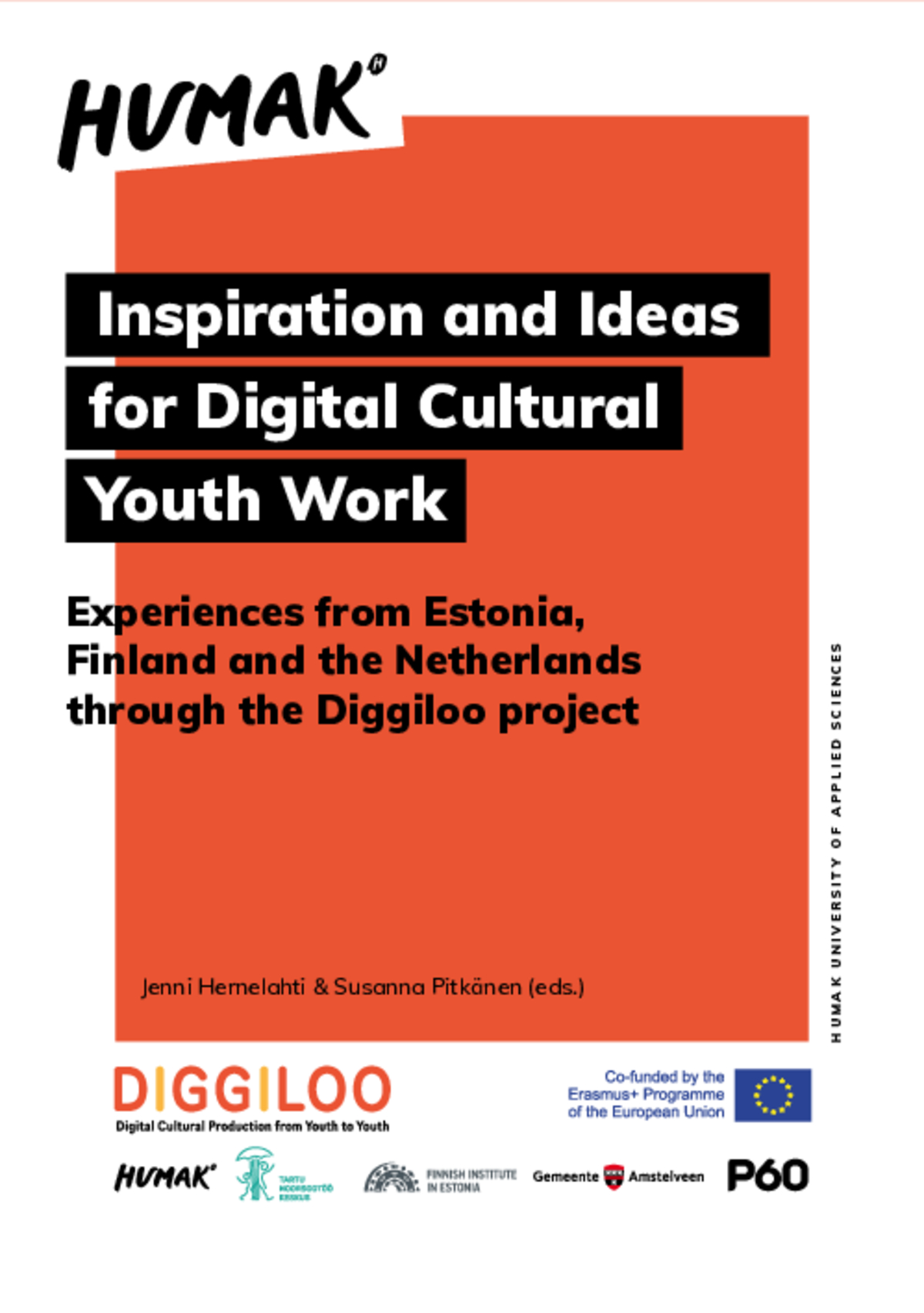We Are Experts in Sign Language Education and Promotion of Linguistic Accessibility
Open UAS Interpretation Courses
We promote equality, linguistic accessibility and people’s right to use their own language and communication methods in different communication and interaction situations.
Our Mission
In the Humak University of Applied Sciences (Humak) sign language interpreting education, we teach sign language interpreting as well as research and develop linguistic accessibility. With our work, we promote multilingual interaction in face-to-face and technology-mediated operating environments together with other players in the field. We support the realization of linguistic rights as well as equality between people, inclusion and well-being in multilingual encounters.
Priorities
1. Promoting Multilingual Interaction
By training sign language interpreters, we enable interaction between hearing, deaf, hard-of-hearing and deaf-blind people in all kinds of encounters, both nationally and internationally. In addition to hearing sign language interpreters, Humak is the only educational institution in Finland that also trains deaf interpreters and Finland-Swedish Sign Language interpreters. We also constantly develop the content of our teaching by regularly asking representatives of working life and customer groups for their views and suggestions on the development of our education. We also consider the changing needs of the industry and interpreters’ work field.
Our RDI activities are focused on the development of interpreting activities and considering the future of the industry. Every year, we write a large number of professional publications on the topics of interpreting, translation, interaction and linguistic accessibility.
2. Internationality
With the help of our international networks, we get fresh research and know-how and are able to share our own know-how with others. We promote international cooperation e.g. with the following activities:
- Development of international networks, formation of new partnerships and development of existing higher education partnerships in several European countries, such as Spain, Netherlands, Ireland, Portugal, France, Sweden, Germany and Scotland.
- Implementation of the international master’s degree, European Master in Sign Language Interpreting (EUMASLI) in cooperation with Herriot Watt (Scotland) and Magdeburg Stendal (Germany) universities.
- International seminar International Days on Linguistic Accessibility (IDLA) to be organized for the first time in 2023
- International lecturer exchanges and visitations
- Student exchange activities
- Development of course and lecture exchanges with international partners
- Staff participation in international seminars and symposiums
- Planning and implementation of international projects
- Delivery and publication of international anthologies
3. Cooperation
One of the owners of Humak is the Finnish Association of the Deaf (Kuurojen Liitto). In addition, we also cooperate with e.g. the Finnish Federation of Hard of Hearing, the Finnish Deafblind Association, Finlandssvenska Teckenspråkiga rf, Aphasia Association and the Finnish Centre for Easy Language (Selkokeskus). Cooperation is carried out in projects and in relation to degree studies, for example in the form of internships, theses and various projects. Parishes, the Finnish National Theatre, the Children and Youth Foundation, the Finnish Science Centre Heureka, the Helsinki Central Library Oodi and the Helsinki Cultural Centre Stog have also served as study and training environments and partners.
For several years now, we have cooperated with the Finnish National Theatre, where theater shows are interpreted into Finnish Sign Language by students. Another example is the annual HELSign event, organized in cooperation between the Finnish Association of the Deaf, the Helsinki Cultural Centre Stoa and Humak, where deaf and hearing artists meet. HELSign is a cultural event that is organized for sign language speakers in their native language and allows the majority population and the sign language community to communicate with each other.
Our Operations in Practice
1. Education
We organize sign language interpreter (AMK) training including the following areas:
- Knowledge of working languages,
- Interaction skills,
- Cultural and operating environment expertise,
- Interpreting skills and
- Professional competence of an interpreter.
Our interpreter training campuses are multilingual. In addition to Finnish Sign Language, Finland-Swedish Sign Language and Finnish, the working and study languages include English and Swedish. Sign language is included in all communication from the first day of study. Our students also have the opportunity to get to know the sign languages of other countries within the framework of international exchange studies. The goal of all teaching is to increase language awareness and effective and purposeful interlingual communication.
Our goal is to train interpreters who
- know how to act in specialist tasks in the field in a professionally and ethically justified manner,
- understand the role of the interpreter,
- know how to adapt according to the operating environment and the customer’s needs,
- know how to apply new forms of working flexibly and
- are able to use working languages as well as communication and interpretation methods in a customer- and situation-oriented manner.
Interpreters are also required to master the technology used in interpreting. This refers to the management of various information technology tools, programs and applications as well as an understanding of how rapidly advancing digitization affects the interpreter’s work environments and methods of operation.
We train sign language interpreters who are experts in interpreting, human interaction and linguistic accessibility. They can work as interpreters for customers who use sign language in varying multilingual and multicultural operating environments and can also be employed in other expert positions in the field.
You can also complete a master’s degree with us. For this, in addition to the bachelor’s diploma in interpreting, at least three years of work experience in the field of interpretation is required. There are two master’s degree options. One of them is the Development of Interpreting training in Finnish and the other is the European Master in Sign Language Interpreting (EUMASLI) in English.
In addition, we also offer study courses and course units through continuous learning channels for anyone interested in interpreting, sign language and linguistic accessibility. The scope of the study unit of the Open University of Applied Sciences is 60 ECTS. It is also possible to study individual courses or smaller study units. They can later be accredited in degree studies.
2. Research, Development and Innovation Activities
We have been training deaf interpreters since 2001, and this uniqueness in the Finnish education field has opened international cooperation opportunities for us. In the years 2015–2018, we were implementing the Erasmus project Developing Deaf Interpreting, the focus of which was the training of deaf interpreters in Europe. The project was the first international project focusing on deaf interpreters.
Finland-Swedish Sign Language is an endangered language. We at Humak have implemented three Finland-Swedish Sign Language revitalization projects in recent years with the support of the Ministry of Education and Culture. In the Lev i vårt språk (Livs 1) educational project (in the years 2015–2017), language specialist training was planned and implemented, and teaching material was collected. In the continuation project (Livs 2, between 2018 and 2020), Finland-Swedish Sign Language interpreter training was planned and implemented. The third project (Livs 3, 2022) again offers language specialist training, but on a smaller scale and for a wider target audience: for both Finland-Swedish Sign Language speakers and those interested in and working with Finland-Swedish Sign Language.
From 2016 to 2019, we participated in the international Google-funded Visual Sign News (Visn) project, where a new kind of visual news service was developed for the first time in the world for deaf people living in Europe who are illiterate and do not know the sign language of their own country. The goal of the Visn project was to enable news to reach the deaf who are not reached by traditional news channels. The content and meanings of the news were conveyed to the viewers through diverse and multi-channel means of communication and interaction. In the project, deaf people were trained as news anchors. In addition, the news broadcasts were implemented so that the language used and the supporting images, maps, icons and infographics were accessible to the widest possible target group.
Since the beginning of our operations, we have produced new knowledge and skills by interviewing deaf people who use sign language and collecting vocabularies of Finnish and Finland-Swedish sign languages. As a result of this work, two thousand new sign language articles have been created for SignWiki, a virtual dictionary maintained by the Finnish Association of the Deaf. This dictionary project was funded by the Kone Foundation, as well as the speech recognition-based intralingual subtitle development project, in which we participated together with Aalto University and the University of Helsinki. Its goal was to develop program subtitling based on speech recognition for the needs of the hearing impaired and immigrants. In the project called Kielettömänä kaupungissa (loosely translated as “In a City Without a Language”) funded by the Kaupunkitutkimus- ja metropolipolitiikka (loosely translated as “Urban Research and Metropolitan Policy”) cooperation program, we studied how immigrants in Finland, who never had the opportunity to learn to read and write in their own country, navigate independently in the city of Helsinki.
Linguistic Rights of Sign Language Speakers and the Societal Meaning of Our Work
Sign language speakers are a linguistic and cultural group. Sign language speakers may include those that are deaf or hard-of-hearing as well as those that are able to hear but, for one reason or another, use sign language in different situations. Sign language is considered a person’s mother tongue when it has been used with them since birth. Sign language can therefore also be the mother tongue of a hearing person if they have acquired it from one or both of their parents or an older sibling. According to the Finnish Association of the Deaf, there are about 5,500 people who use Finnish and/or Finland-Swedish Sign Language as their mother tongue. About 3,000 of them are deaf. There are, in total, about 10,000–14,000 people in Finland that know a sign language.
In interpreted communication and interaction situations, one party can be a deaf, hard-of-hearing, or deaf-blind customer, and the other party is usually a hearing (mostly Finnish-speaking) person. The role of the interpreter is to enable equal and working, smooth interaction between these parties.
Every Finnish deaf and deaf-blind person has had the right to a sign language interpretation service since the 1979 legislative reform. In 1981, the hearing-impaired also received this right. People of all ages who benefit from interpretation have the right to interpretation in any situation. As a rule, the costs of the interpretation service are either covered by the Social Insurance Institution (SII; Kela in Finnish) or certain other authorities. The payer can also be an organization or private individuals.
The linguistic rights of sign language speakers are protected in the Finnish Constitution (731/1999, § 17). In addition, the Sign Language Act (2015/359) entered into force in 2015, which applies to both of Finland’s national sign languages, i.e. both Finnish and Finland-Swedish sign languages. In this law, the authorities are obliged to provide the service in the customer’s own language or enable the service to be received with the help of an interpreter service. The purpose of the Sign Language Act is also to increase the authorities’ awareness of sign languages and sign language users as a linguistic and cultural minority.
Interpretation services aim to enable the realization and implementation of linguistic rights and linguistic accessibility, as well as equal participation in the activities of society. Our mission is to train competent specialists for expert positions in the field of interpretation. At the international level, Finland and Humak are at the forefront of training sign language interpreters.
Blogs
Team Iceland goes Canoeing with Humak – authentic learning experience in EOE Finland
Author: Jussi Hynninen, Master of Sport Sciences, Adventure Education Senior […]






